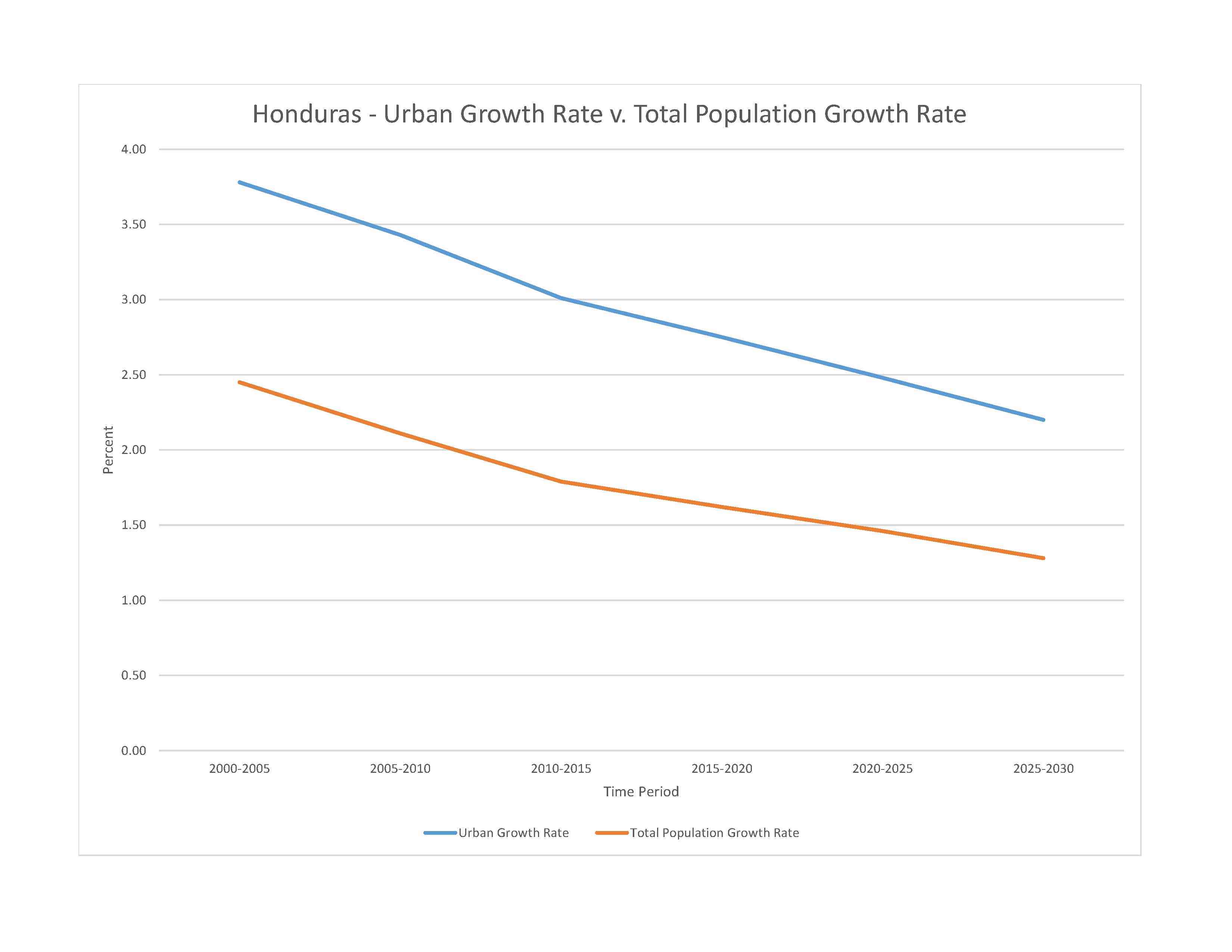
9,571,352 (2023 est.)
noun: Honduran(s)
adjective: Honduran
Mestizo (mixed Amerindian and European) 90%, Amerindian 7%, African descent 2%, White 1%
Spanish (official), Amerindian dialects
major-language sample(s):
La Libreta Informativa del Mundo, la fuente indispensable de información básica. (Spanish)
The World Factbook, the indispensable source for basic information.
Spanish audio sample:
Evangelical/Protestant 48%, Roman Catholic 34%, other 1%, none 17% (2020 est.)
Honduras is one of the poorest countries in Latin America and has one of the world's highest murder rates. More than half of the population lives in poverty and per capita income is one of the lowest in the region. Poverty rates are higher among rural and indigenous people and in the south, west, and along the eastern border than in the north and central areas where most of Honduras' industries and infrastructure are concentrated. The increased productivity needed to break Honduras' persistent high poverty rate depends, in part, on further improvements in educational attainment. Although primary-school enrollment is near 100%, educational quality is poor, the drop-out rate and grade repetition remain high, and teacher and school accountability is low.
Honduras' population growth rate has slowed since the 1990s and is now 1.2% annually with a birth rate that averages 2.1 children per woman and more among rural, indigenous, and poor women. Honduras' young adult population - ages 15 to 29 - is projected to continue growing rapidly for the next three decades and then stabilize or slowly shrink. Population growth and limited job prospects outside of agriculture will continue to drive emigration. Remittances represent about a fifth of GDP.
0-14 years: 27.92% (male 1,352,581/female 1,319,338)
15-64 years: 66.18% (male 3,050,008/female 3,283,949)
65 years and over: 5.91% (2023 est.) (male 249,241/female 316,235)
total dependency ratio: 53.3
youth dependency ratio: 46.9
elderly dependency ratio: 6.4
potential support ratio: 15.5 (2021 est.)
total: 25.3 years (2023 est.)
male: 24.4 years
female: 26.2 years
1.28% (2023 est.)
20.2 births/1,000 population (2023 est.)
5.9 deaths/1,000 population (2023 est.)
-1.5 migrant(s)/1,000 population (2023 est.)
most residents live in the mountainous western half of the country; unlike other Central American nations, Honduras is the only one with an urban population that is distributed between two large centers - the capital of Tegucigalpa and the city of San Pedro Sula; the Rio Ulua valley in the north is the only densely populated lowland area
urban population: 60.2% of total population (2023)
rate of urbanization: 2.48% annual rate of change (2020-25 est.)

1.568 million TEGUCIGALPA (capital), 982,000 San Pedro Sula (2023)
at birth: 1.03 male(s)/female
0-14 years: 1.03 male(s)/female
15-64 years: 0.93 male(s)/female
65 years and over: 0.79 male(s)/female
total population: 0.93 male(s)/female (2023 est.)
20.3 years (2011/12 est.)
note: data represents median age a first birth among women 25-49
72 deaths/100,000 live births (2020 est.)
total: 15.4 deaths/1,000 live births (2023 est.)
male: 17.6 deaths/1,000 live births
female: 13.3 deaths/1,000 live births
total population: 71.9 years (2023 est.)
male: 68.4 years
female: 75.5 years
2.37 children born/woman (2023 est.)
1.17 (2023 est.)
69.4% (2019)
improved: urban: 100% of population
rural: 90.7% of population
total: 96.1% of population
unimproved: urban: 0% of population
rural: 9.3% of population
total: 3.9% of population (2020 est.)
9% of GDP (2020)
0.5 physicians/1,000 population (2020)
0.6 beds/1,000 population (2017)
improved: urban: 96.7% of population
rural: 87.9% of population
total: 93% of population
unimproved: urban: 3.3% of population
rural: 12.1% of population
total: 7% of population (2020 est.)
degree of risk: high (2023)
food or waterborne diseases: bacterial diarrhea, hepatitis A, and typhoid fever
vectorborne diseases: dengue fever
21.4% (2016)
total: 2.73 liters of pure alcohol (2019 est.)
beer: 1.6 liters of pure alcohol (2019 est.)
wine: 0.04 liters of pure alcohol (2019 est.)
spirits: 1.09 liters of pure alcohol (2019 est.)
other alcohols: 0 liters of pure alcohol (2019 est.)
7.1% (2019)
53.5% (2023 est.)
women married by age 15: 9.2%
women married by age 18: 34%
men married by age 18: 10% (2019 est.)
6.4% of GDP (2020 est.)
definition: age 15 and over can read and write
total population: 88.5%
male: 88.2%
female: 88.7% (2019)
total: 10 years
male: 10 years
female: 11 years (2019)
NOTE: The information regarding Honduras on this page is re-published from the 2024 World Fact Book of the United States Central Intelligence Agency and other sources. No claims are made regarding the accuracy of Honduras 2024 information contained here. All suggestions for corrections of any errors about Honduras 2024 should be addressed to the CIA or the source cited on each page.
This page was last modified 04 May 24, Copyright © 2024 ITA all rights reserved.